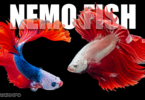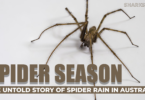Marine life is full of all sorts of creatures, insects, and animals. It even has horizons that have yet to be explored. We know more about stars and galaxies than the deep ocean creatures. From these depths of the sea, there is a fish, commonly known as the Blobfish. It was often categorized as one of the ugliest fish out there. But, is everything we see about Blobfish on the internet true or not, let’s find out.
Blobfish: A Guide About the Ugliest Animal in the World
Blobfish popular as fathead sculpin are one of the many creatures found in the deepest darkest oceans. It was originally discovered in 2003, while a deep-ocean expedition was in progress in New Zealand by Kerryn Parkinson. During their explorations, they found a live creature in the form of a slime blob, which was named the Blobfish later on.

Scientific Classification
Blobfish, known as the Psychrolutes Marcidus in science books belong to the Psychrolutidae family of living creatures. It is a part of the class Actinopterygii which as finned fishes, lies in the phylum of Chordata. Blobfish is one of the only few creatures that has been derived from the depth of the oceans.
Evolution
The Blobfish is one of the recently discovered non-invasive species. Scientists believe that these Blobfishes were once similar to normal fishes. But due to the competition and harsh conditions they were facing, slowly their bodies evolved into a much more depth-friendly structure. This made these Blobfish low energy and low maintenance fishes of the deep sea.
Appearance and Characteristics
Blobfish have a specific body shape and way of survival under the pressure of those depths. They have strong jaws, feathery pectoral fins, and tapered tails. Blobfish can grow about 12 inches (which is equal to 1 foot) It has small eyes and a somewhat blobbed human shape-like face. They do not have a swim bladder, unlike other fishes with a swim bladder, which helps them to float around.

Rather, its whole body is made of material similar to gelatins. The Blobfish do not have any teeth and lack muscles. This is a huge advantage for Blobfish as it helps its body to opt and survive under the water pressure of the deep sea. Underwater, they have a properly shaped body, similar to any other fish out there.
Blobfish we have seen in different memes and other places are unfortunately deformed Blobfish. This is because their jelly-like body retains its proper shape until it is facing extreme pressure. As soon as you remove the pressure that was allowing them to retain their original shape, their soft body will turn into a slime blob. (The same one we are quite familiar with)
Food
Blobfish are inherently from predator groups, and can easily feast on another small mob. They wait at the bottom of the ocean for their food to travel nearby. These mobs include the bitterstar, carrion, and crustaceans that travel near the bed of the ocean. Once they are close by, the Blobfish use just energy to eat them.

Fun Fact: Blobfish do not have to go after food, rather they just open their mouth to gallop the prey into it if it is passing nearby.
Habitat
Blobfish are found in the dark depths of the ocean, where light can not reach through the water. They geographically lie near New Zealand and nearby water bodies. A Blobfish is often lying below 2,000 feet to even 4,000 feet deep inside the ocean. Most of the known aquatic species are not even found in this mentioned area, making it even more mysterious about the sea creatures such as Blobfish and other mobs that might hunt them.

Reproduction
Like most of the sea creatures, Blobfish also lay eggs. It is believed that a huge group of female Blobfish gather at a single place to lay eggs. They usually visit a place, which has warmer temperatures near the rocky surfaces. A female Blobfish can lay eggs up to 100k during the breeding season. After laying, the mother Blobfish even waits for eggs to hatch and also protects them during the process.
Once hatched, these baby Blobfish also have unique physical characteristics, just like their parents. It includes that big head, small eyes, and blobby nose just like their mother Blobfish. These larvae will slowly grow into mature Blobfish

Types of Blobfish
There are essentially 4 main types of Blobfish out there:
- Psychrolutes occidentalis
- Psychrolutes microporos
- Psychrolutes phrictus
- Psychrolutes marcidus
Psychrolutes Occidentalis: This type of Blobfish is found near the Tasmanian and Australian shores. They are located between 350 to 750 meters in depth of the ocean and have pink bodies with loose skin covering the whole body.
Psychrolutes Microporos: This special type of Blobfish is quite difficult to find, as it lies in the depth of oceans from 3200 meters to approximately 4000 meters below. They are also similar to the normal Blobfish with almost no muscles and teets. It is found in the water bodies near New Zealand.
Psychrolutes Phrictus: This Blobfish is found near Japan, off the shores of the North Pacific Ocean. They are found in these oceans below 840 meters. These Blobfish also have small thread-like muscles, found on their skins.
Psychrolutes Marcidus: These are the typical Blobfish, found in the slightly deep ocean floors ranging from 600 to 1200 meters below the actual sea level. Their body is mainly made up of gelatine mass.
Blobfish as Endangered Species
Blobfish are considered an endangered species. Despite being found just 20 years ago, their population is slowly declining day by day. Although they lay hundreds of eggs, only a couple of them enter into their mature age. The main reason behind this is excessive fishing, which is constantly damaging the unexplored ecosystem of the dark ocean.
Not So Fun Fact: Blobfish is an official mascot of the Ugly Animal Preservation Society, formally known as UAPS
FAQs
How Does a Blobfish Look Underwater?
Ans: Underwater with sufficient pressure, Blobfish actually look similar to any other fish out there.
Do Blobfish Have Blood?
Ans: Yes, they have a centralized blood circulation system.
Do Sharks Eat Blobfish?
Ans: No, and technically they can’t as Blobfish live much deeper inside the ocean than sharks.
Can Blobfish Eat Octopus?
Ans: Yes, they can actually eat an octopus.
Why Do Blobfish Turn into Deep Pink Color When Taken Out of Water?
Ans: When extreme pressure is removed from the Blobfish body, its tissues get severely damaged thus turning pink.
Conclusion
Blobfish is an extremely courageous fish, located in the depths of the oceans near countries including New Zealand, Japan, and a couple of others. It lives underwater, experiencing extreme pressure, forcing its gelatin-like body to retain its shape. It does not move around much and only eats things like carrion, bitterstar, and crustaceans as food sources. Overall, This cute and not-so-ugly animal in the world has to go through a lot to look this miserable outside water.







